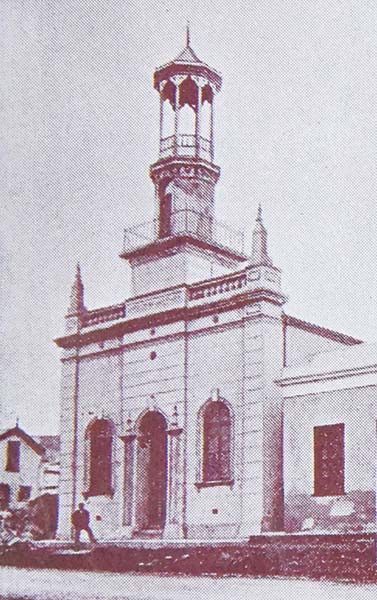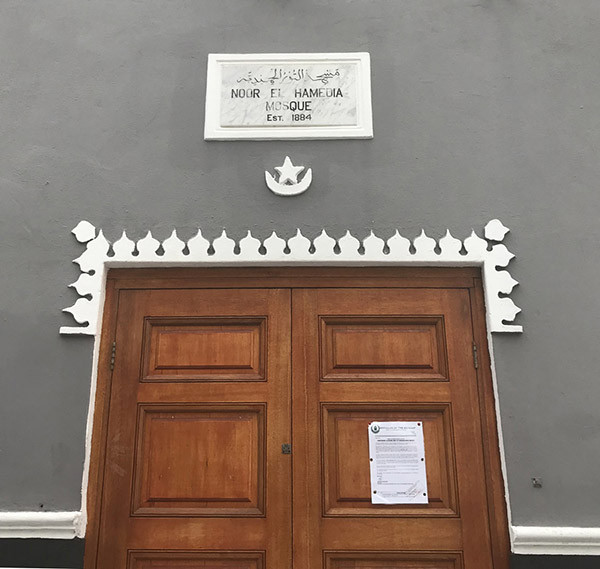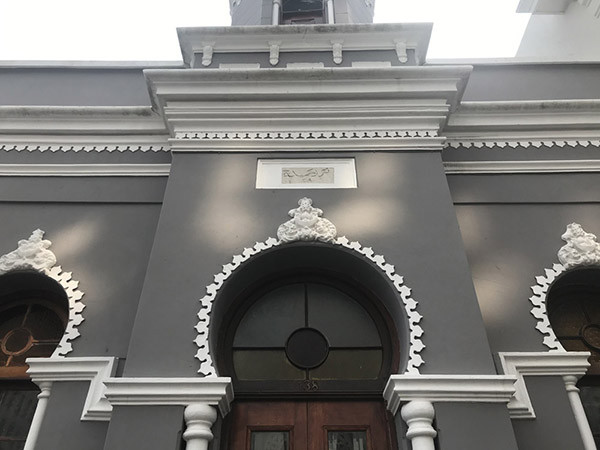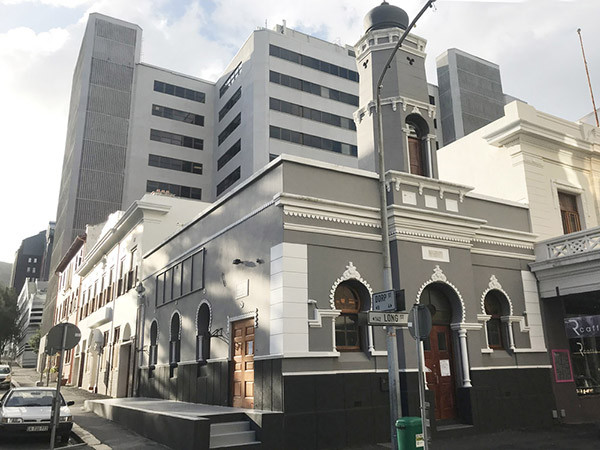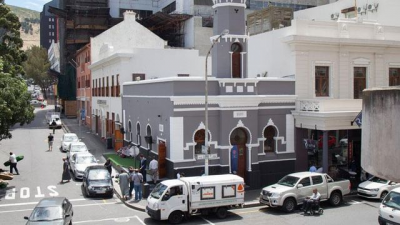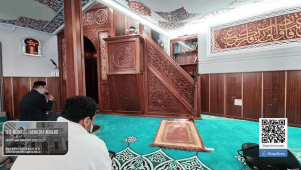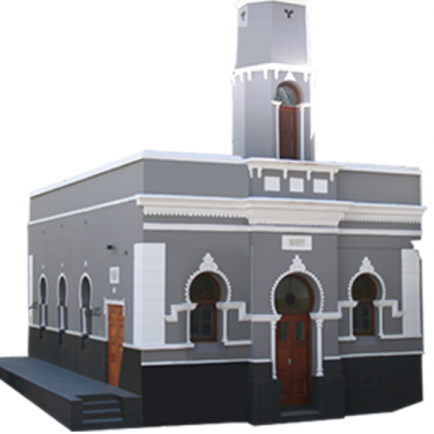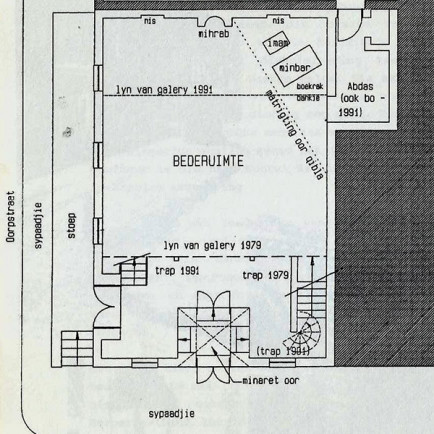Noor El Hamedia Mosque
History
Also known as Hanafi Mosque / Musgid Jamie Mosque / Dorp Street MosqueThe property was sold in order to build a mosque, as stated by the acts of title. Due to the discrimination they experienced as a result of the court rulings in 1873 and 1874 that gave the Hanafis and the Hanafi Code legitimacy, they were forced to establish their own place of worship. The title document said that anyone who is a Muslim could use the mosque, but that the Hanafi Code would apply when it came to worship.
Urban and Architectural
It is a little mosque that takes up the entire area. The house's interior walls were taken down to make room for a prayer hall. On the Dorp Street side, a stoep was still there. The mosque occupies the entire land and is constructed as a two-story, absolutely regular block. The flat roof is enclosed and hidden by a parapet wall, with plastered feaux quoining accentuating the corners. The main entrance and the base of the minaret extend beyond the front wall to create a tower that is twice as tall as the structure. The top half is octagonal and has two levels beneath an onion dome with a crescent moon; the base is square and has a platform that is just above parapet height.
Description
The prayer hall, which has a mihrab, or prayer niche, on the opposite wall, is connected to the minaret's four corner columns through a small entrance. Before 1979, restrooms were added to the northern corner and a passageway connected them to the prayer hall. When the gallery was expanded to nearly fill the entire building in the 1980s, these facilities were doubled. The prayer niche lies in the center of the prayer hall, and it is encircled by a marble frame with a segmental onion dome in bas-relief. Without attempting to point it toward Mecca, the central arch is symmetrically positioned.
Details
الموقع
Noor El Hamedia Mosque, 138 Long St, Cape Town City Centre, Cape Town, 8000, South Africa
عدد المصليين
70
المالك / المتبرع
Mogamat Dollie and Jongie Siers
المعماري
تاريخ البناء
1884
Area
140
الرسومات المعمارية
الخريطة
History
Also known as Hanafi Mosque / Musgid Jamie Mosque / Dorp Street MosqueThe property was sold in order to build a mosque, as stated by the acts of title. Due to the discrimination they experienced as a result of the court rulings in 1873 and 1874 that gave the Hanafis and the Hanafi Code legitimacy, they were forced to establish their own place of worship. The title document said that anyone who is a Muslim could use the mosque, but that the Hanafi Code would apply when it came to worship.
Urban and Architectural
It is a little mosque that takes up the entire area. The house's interior walls were taken down to make room for a prayer hall. On the Dorp Street side, a stoep was still there. The mosque occupies the entire land and is constructed as a two-story, absolutely regular block. The flat roof is enclosed and hidden by a parapet wall, with plastered feaux quoining accentuating the corners. The main entrance and the base of the minaret extend beyond the front wall to create a tower that is twice as tall as the structure. The top half is octagonal and has two levels beneath an onion dome with a crescent moon; the base is square and has a platform that is just above parapet height.
Description
The prayer hall, which has a mihrab, or prayer niche, on the opposite wall, is connected to the minaret's four corner columns through a small entrance. Before 1979, restrooms were added to the northern corner and a passageway connected them to the prayer hall. When the gallery was expanded to nearly fill the entire building in the 1980s, these facilities were doubled. The prayer niche lies in the center of the prayer hall, and it is encircled by a marble frame with a segmental onion dome in bas-relief. Without attempting to point it toward Mecca, the central arch is symmetrically positioned.


